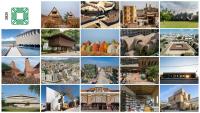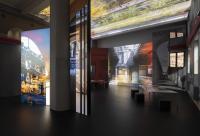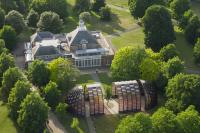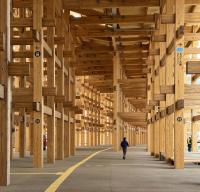Tobacco District in Bremen
Bremen, Germany
The revitalisation of the Tobacco District in Bremen-Woltmershausen is one of the most significant urban development areas of Bremen and a flagship project for the conversion of historical, industrial spaces into modern, multifunctional urban districts. On the 20 hectare site of the former Brinkmann Tobacco Factory, there is a lively mix of living, working, culture and leisure. The area housed one of the largest tobacco factories in Europe with over 6,000 employees. Once production had closed down, the site stood empty for a long time until the estate agent Justus Grosse developed the vision to turn the area into a future-oriented urban district.
The aim of the revitalisation is to keep the industrial character of the historic structure while simultaneously integrating modern uses. Listed buildings such as the "Factory" and the "Old Tobacco Warehouse" were refurbished carefully and now offer space for innovative office lofts and commercial premises. New build projects such as the "Forum" complement the overall appearance and create additional office and service spaces. The buildings were converted according to their new use, refurbished energetically and technically updated with modern building services and electrical engineering, partly with photovoltaics. JUNG's switches and sockets from the LS 990 range in white or the surface-mounted variant LS CUBE were used in many buildings of the district's development such as "Tobacco Warehouses 1 and 2", the "Factory" including the bakery Müller & Egerer and the restaurant Foodbox Pusdorf, the centre for art, the restaurant Justus, the building of the Bremen Philharmonic Orchestra, the Boulevard Theatre Bremen as well as the studio houses.
The "Factory" building complex was constructed in 1937 and was the centre of the site for 30 years. The historic brick building has now been converted by Hilmes Lamprecht Architects from Bremen into a multifunctional building with an office and service centre, catering and meeting rooms. During the renovation, particular attention was paid to retaining characteristic architectural features such as the high ceilings and the robust steel construction, to give the building its industrial charm. LS CUBE surface-mounted switches with visible cable ducts were used fittingly for the electrical installation. The simple cubes with switches and sockets are integrated harmoniously into the industrial look of the interior design and enable a modern electrical installation with minimal interference in the historic building.
The old tobacco warehouses, which were built as a reinforced concrete skeleton structure of around 150 metres long in 1972, were also redesigned during the modernisation by the planning team of Hilmes Lamprecht Architects. The building blocks were completely gutted and provided with reinforced concrete balconies which emphasise the strict grids. "Tobacco Warehouse 1" now accommodates 161 modern office lofts and a mixture of small businesses while "Tobacco Warehouse 2" was converted into a public facility with an apprenticeship and training department as well as premises for an IT company. The characteristic industrial charm of the building was maintained by keeping the red brick infills. The interior rooms are simple and modern. The classic flush-mounted variant LS 990 in white was used for the electrical installation.
The successful transformation of the area and the individual properties shows how historic buildings can be integrated in modern urban structures through careful renovation and creative conversion, without losing their unique character. The Tobacco District is a success story for inner urban development against the background of construction after growth.
- Manufacturers
- JUNG
- Location
- Bremen, Germany
- Year
- 2025
- Team
- Justus Grosse Real Estate, Hilmes Lamprecht Architekten, Hillebrand GmbH, BeTi Elektrotechnik GmbH & Co. KG, Henrik Schipper










































